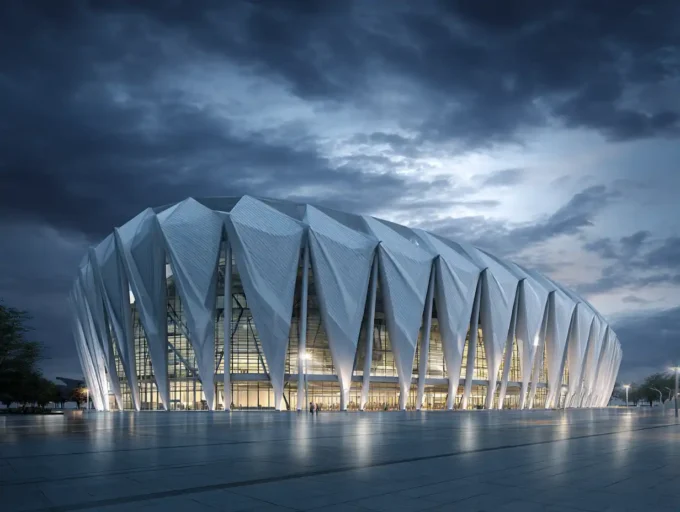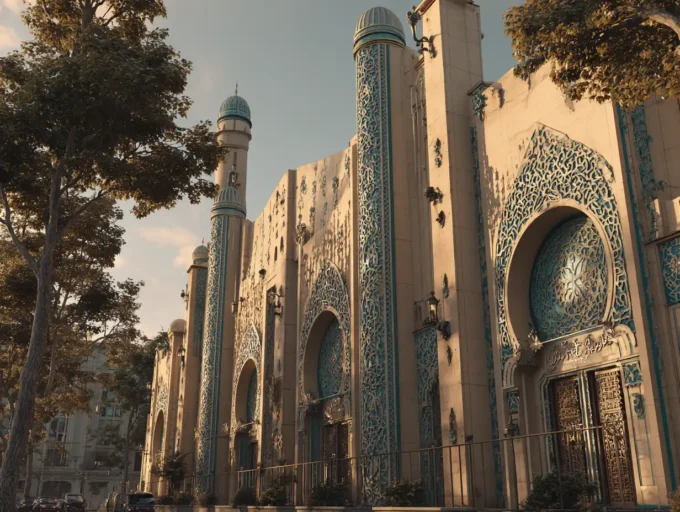Everyday objects shape our lives in ways we often overlook. From the humble chair to the sturdy table, these items aren’t just functional; they influence the spaces we inhabit. In architecture, integrating these familiar items transforms not only aesthetics but also the user experience, creating environments that resonate with our daily routines.
As we explore the fascinating intersection of everyday objects and architectural design, we’ll uncover how these elements contribute to both form and function. By reimagining common items, architects can foster connections between people and their surroundings, making spaces feel more inviting and relatable. Join us as we delve into the creative possibilities that arise when the ordinary meets the extraordinary in architecture.

The Role of Everyday Objects in Architecture
Everyday objects shape architectural design by merging functionality with aesthetics. Chairs, tables, and even lighting fixtures contribute significantly to the overall experience of a space. Reimagining these items leads to innovative solutions that enhance usability while maintaining visual appeal.

Enhancing Functionality
We incorporate everyday objects that enhance functionality. Modular furniture can adapt to various activities, allowing spaces to transform easily. For example, stackable chairs permit efficient storage, freeing up floor space for events or gatherings.
Creating Aesthetics
Everyday objects contribute to aesthetics. Unique designs in common items, such as sculptural lamps or artistically crafted tables, can act as focal points. This infusion of creativity adds character and charm to environments, inviting users to engage with their surroundings.
Fostering Connections
Everyday objects play a crucial role in fostering connections among users. Shared tables encourage collaboration in communal areas, while seating arrangements promote conversation in lounge spaces. These objects become facilitators of social interaction, enhancing the overall user experience.
Blurring Boundaries
Integrating everyday objects in architecture blurs the lines between the ordinary and the extraordinary. Architects can use familiar items in unexpected ways, challenging conventional perceptions of space. For instance, incorporating bookcases as structural elements can create an inviting atmosphere while serving dual purposes.
Inspiring Creativity
Everyday objects inspire creativity in design. By analyzing their form, function, and placement, architects can reintroduce these items with a fresh perspective. This approach often leads to unexpected solutions, resulting in personalized and memorable spaces.
Everyday objects mold contemporary architecture through their functional, aesthetic, and social roles. Their integration redefines spaces, making them more inviting and engaging for users.
Historical Perspectives
Everyday objects have a profound influence on architecture throughout history. They not only reflect cultural values but also shape the functionality and aesthetics of spaces.

Influences of Domestic Design
Domestic design has significantly impacted architectural trends. Items such as chairs, tables, and lighting fixtures inform how we plan spaces. We often observe furniture styles reflecting the socio-cultural context of different eras. For example, minimalist Scandinavian designs emphasize simplicity and functionality, influencing modern architectural practices. Similarly, the Arts and Crafts movement in the late 19th century celebrated handcrafted objects, leading architects to focus on materiality and craftsmanship in their designs.
Case Studies in Architectural History
Multiple case studies illustrate how everyday objects inform architectural developments.
| Case Study | Description |
|---|---|
| Mont Saint-Michel | The design of this iconic abbey integrates domestic items like communal tables for gatherings, reflecting the importance of social spaces in religious architecture. |
| Fallingwater | Frank Lloyd Wright’s integration of natural materials and furniture design blurs the line between indoor and outdoor spaces, emphasizing harmony with the environment. |
| Villa Savoye | Le Corbusier’s design utilizes furniture as structural elements, showcasing how everyday objects can transform spatial perception and usability. |
By examining these case studies, we gain insights into how incorporating everyday objects not only adapts but also enriches architectural narratives over time.
Everyday Objects as Design Elements
Everyday objects play a crucial role in shaping architectural spaces, blending functionality with aesthetic appeal. By integrating common items into our designs, we create environments that resonate with users.

Materiality and Function
Everyday objects enhance the materiality and function of spaces. Material selection significantly influences the user experience and the overall atmosphere. For instance, using natural materials like wood and stone promotes warmth and comfort, while metals and glass provide modernity. Our choices in surface textures, such as smooth versus rough, also affect sensory interactions. Functionality thrives when objects serve multiple purposes, like ottomans doubling as storage or tables that can transform into workspaces. This multipurpose nature encourages adaptability and efficiency, maximizing space usability.
Aesthetic Contributions
Everyday objects contribute greatly to the aesthetics of architectural environments. Unique designs in furniture and decor serve as focal points, capturing attention and adding character. Sculptural lamps, for example, function as both lighting and art, enriching visual interest. The color palette of these objects can enhance or contrast with the overall design scheme, allowing for creative expression. We can create cohesive themes by selecting everyday items that share stylistic elements, fostering unity within spaces. Integrating pieces that evoke nostalgia or cultural significance deepens the emotional connection users feel to their surroundings.
Impact on User Experience
Everyday objects significantly shape user experiences in architectural spaces. Their presence can alter perceptions and emotions, enhancing the overall environment.

Psychological Effects of Everyday Objects
Everyday objects elicit emotional responses and foster a sense of familiarity. Objects like chairs and tables can invoke comfort and warmth, encouraging users to engage with their surroundings. Personal items within a space can evoke nostalgia, making users feel more connected. Color, texture, and material also influence mood; for instance, soft fabrics create a calming atmosphere, while vibrant colors energize areas. Understanding these psychological impacts allows architects to design spaces that promote well-being and satisfaction, ultimately guiding users towards positive experiences.
Interaction Between Space and Objects
The interaction between everyday objects and architectural space defines functionality and aesthetics. Modular furniture adapts to various activities, optimizing usability while ensuring visual harmony. Designers can create layouts that promote movement and accessibility, encouraging users to explore their surroundings. Spaces featuring shared elements, like communal tables or seating areas, promote social interaction and collaboration. By carefully curating arrangements of objects, architects can shape pathways, create focal points, and lead users through the environment, making every visit memorable and meaningful.
Contemporary Applications
Everyday objects play a crucial role in modern architectural practice, enhancing design through innovation and sustainability. These applications not only redefine spaces but also contribute to environmentally conscious solutions.

Innovative Uses in Modern Architecture
Architects increasingly incorporate everyday objects in innovative ways. We observe how multi-functional furniture, like convertible tables and modular seating, adapts to diverse settings while optimizing space. Unique installations, such as hanging planters or wall-mounted shelving, transform ordinary items into artistic features, merging function with aesthetics. In creative settings, playful designs like oversized chairs or abstract light fixtures serve as focal points, sparking interaction and engagement among users. This emphasis on everyday objects redefines spaces, encouraging exploration and interaction.
Sustainability and Everyday Objects
Sustainability intersects with everyday objects, driving eco-friendly architectural practices. We prioritize materials like reclaimed wood, recycled metal, and sustainable textiles, which reduce environmental impact while enhancing design quality. Everyday items, designed with longevity in mind, contribute to a circular economy by minimizing waste and promoting responsible consumption. Initiatives incorporating greenery, such as vertical gardens and urban farming, utilize commonplace items like pots and planters, fostering biodiversity and improving air quality. By embracing sustainable practices, architects create spaces that maintain ecological balance while remaining functional and visually appealing.
Conclusion
Everyday objects significantly impact architectural design and user experiences. Our exploration emphasizes how reimagining items like chairs and tables enhances both functionality and aesthetics. We observe that integrating modular furniture adapts to various activities, ensuring spaces remain both usable and visually appealing.
Unique designs serve as focal points that enrich environments, encouraging social interaction and fostering connections. By incorporating everyday objects in unconventional ways, architects blur the lines between ordinary and extraordinary, igniting creativity in design.
Historically, these objects reflect cultural values and contribute to architectural narratives. Our case studies of Mont Saint-Michel, Fallingwater, and Villa Savoye illustrate how everyday items inform and shape architectural developments. Material selection also plays a vital role, affecting user experience and atmosphere.
In contemporary architecture, sustainability and innovation take center stage. We witness architects utilizing multi-functional furniture and eco-friendly materials, aligning with a circular economy. Initiatives such as vertical gardens demonstrate how commonplace items can enhance biodiversity and air quality.
Ultimately, everyday objects redefine architectural spaces, making them more inviting and engaging, while promoting a more sustainable environment.
- aesthetic architecture
- aesthetic connections in architecture
- Architectural Design
- architectural exploration
- architectural functionality
- architecture and design trends
- architecture and everyday objects
- design aesthetics in architecture
- design and functionality in architecture
- design elements in architecture
- everyday objects in design
- functional design in architecture
- innovative architectural design
- modern architectural design
















Leave a comment